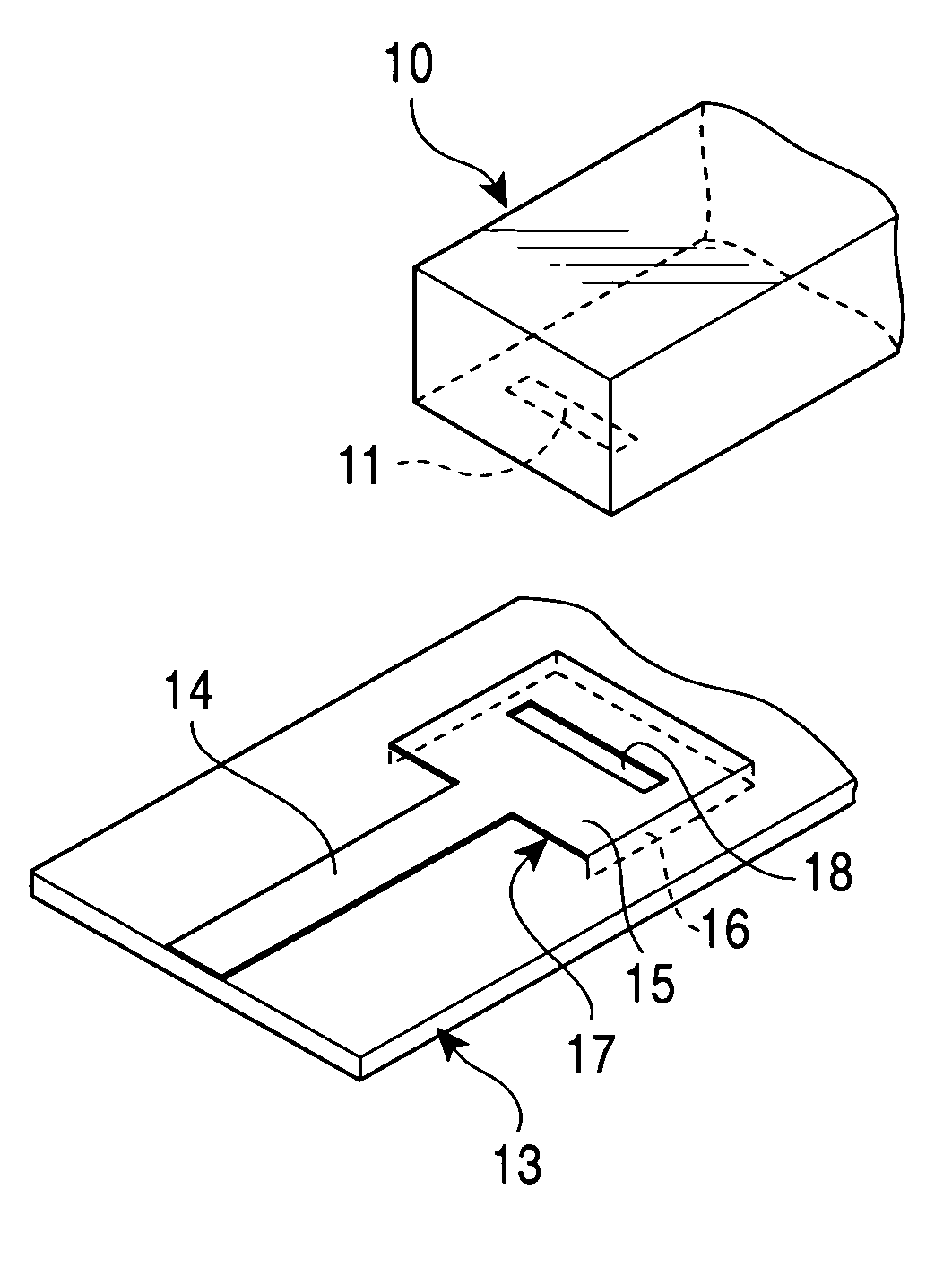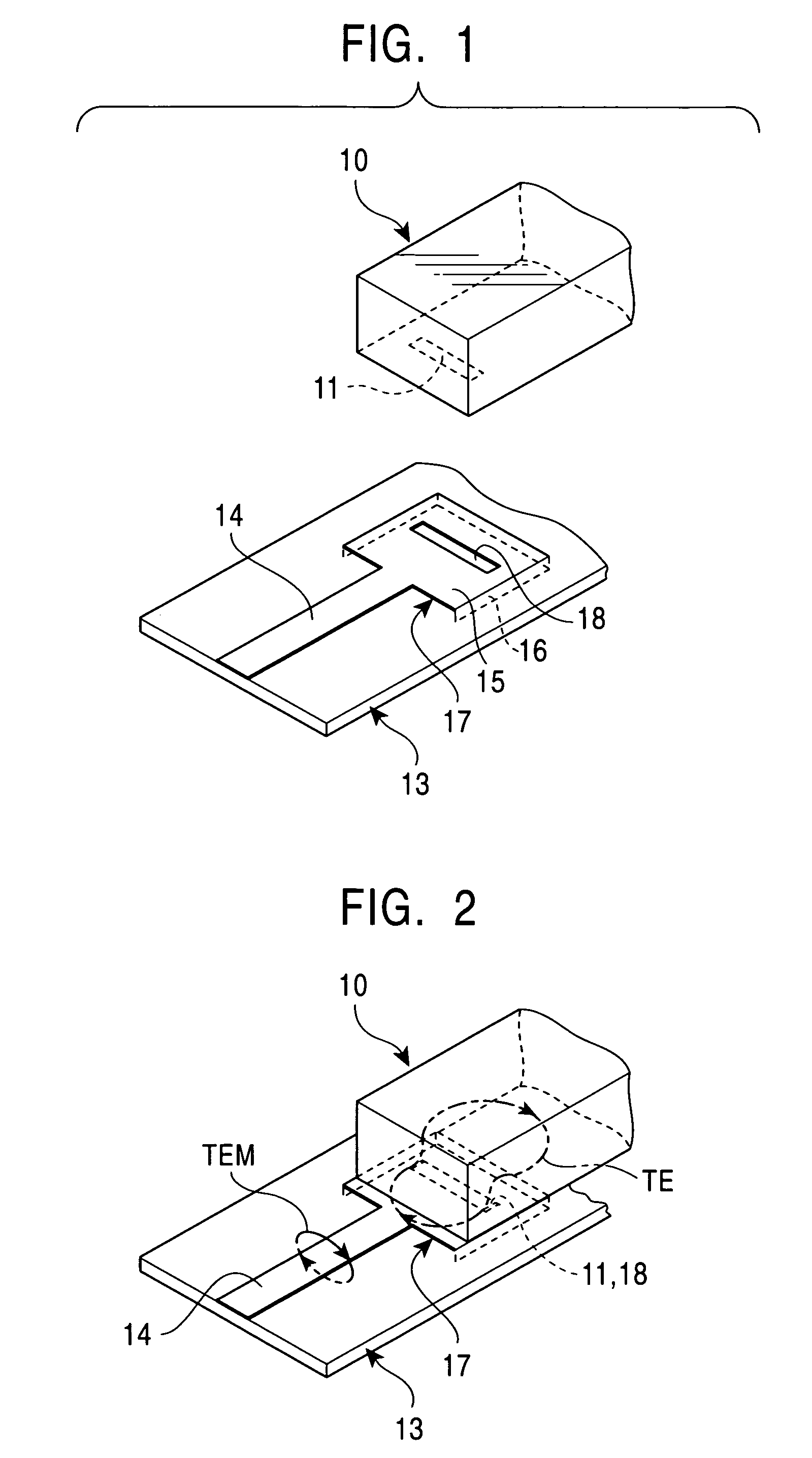Input/output coupling structure for dielectric waveguide resonator
a dielectric waveguide and coupling structure technology, applied in the direction of coupling devices, resonators, electrical equipment, etc., can solve the problems of poor mass-productivity and considerable difficulty in forming input/output electrode patterns, and achieve the effect of facilitating the application of dielectric waveguide resonators
- Summary
- Abstract
- Description
- Claims
- Application Information
AI Technical Summary
Benefits of technology
Problems solved by technology
Method used
Image
Examples
Embodiment Construction
[0021]With reference to the drawings, various embodiments of the present invention will now be described. FIG. 1 is a perspective view showing a coupling structure between a dielectric waveguide resonator and a microstrip line according to one embodiment of the present invention. A printed circuit board 13 is provided with a microstrip line 14 and a mode conversion section 17 connected with the microstrip line 14. The mode conversion section 17 is formed as a rectangular cavity. The three sides of the cavity are surrounded by a conductive wall 16, and one side connected with the microstrip line 14 has no conductive wall. A conductive film 15 for the mode conversion section 17 is formed on the front surface of the printed circuit board 13. A part of the conductive film 15 is removed to form a slot 18 therein. A dielectric waveguide resonator 10 has a bottom surface formed with a conductive film. A part of the conductive film of the resonator 10 is also removed to form a slot 11 there...
PUM
 Login to View More
Login to View More Abstract
Description
Claims
Application Information
 Login to View More
Login to View More - R&D
- Intellectual Property
- Life Sciences
- Materials
- Tech Scout
- Unparalleled Data Quality
- Higher Quality Content
- 60% Fewer Hallucinations
Browse by: Latest US Patents, China's latest patents, Technical Efficacy Thesaurus, Application Domain, Technology Topic, Popular Technical Reports.
© 2025 PatSnap. All rights reserved.Legal|Privacy policy|Modern Slavery Act Transparency Statement|Sitemap|About US| Contact US: help@patsnap.com



